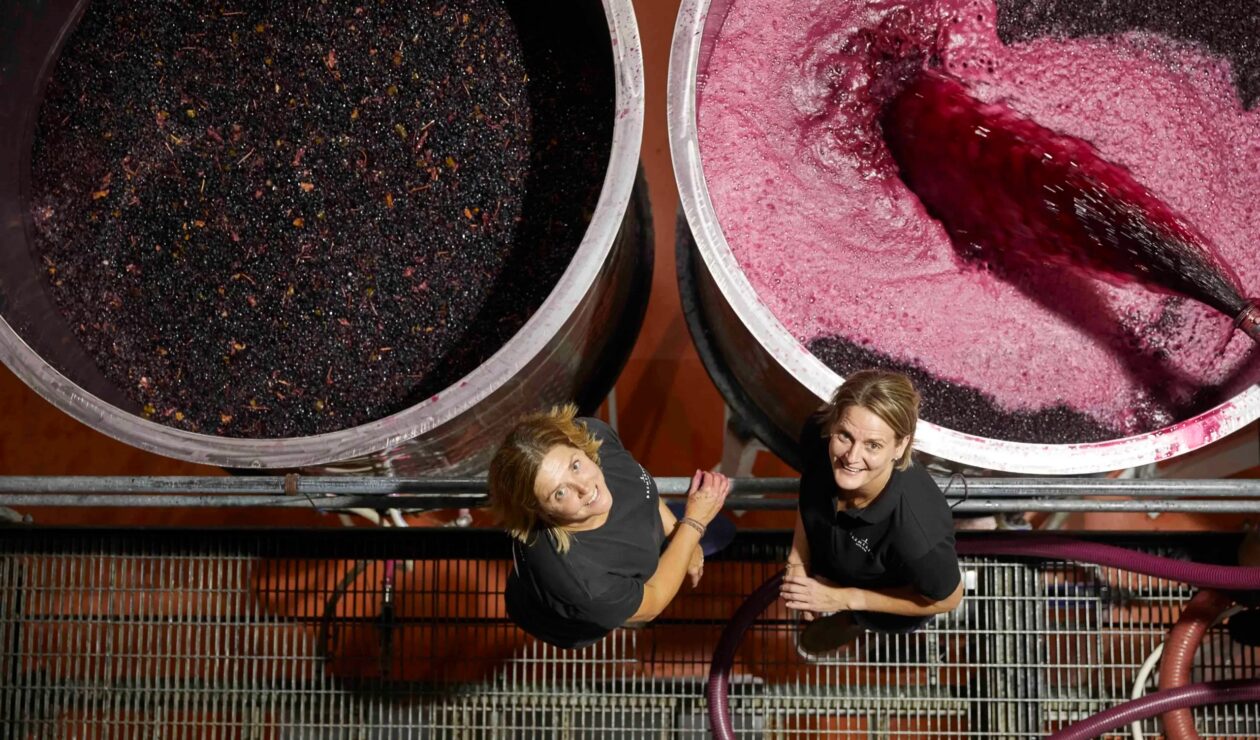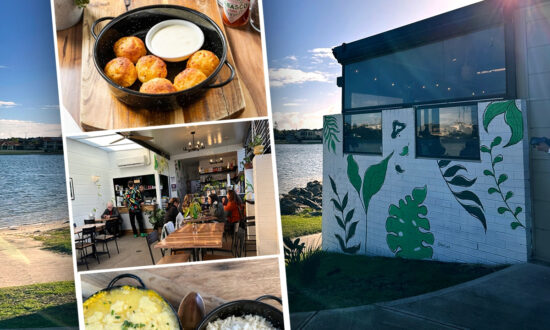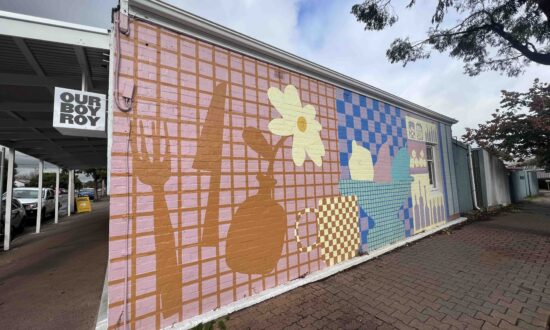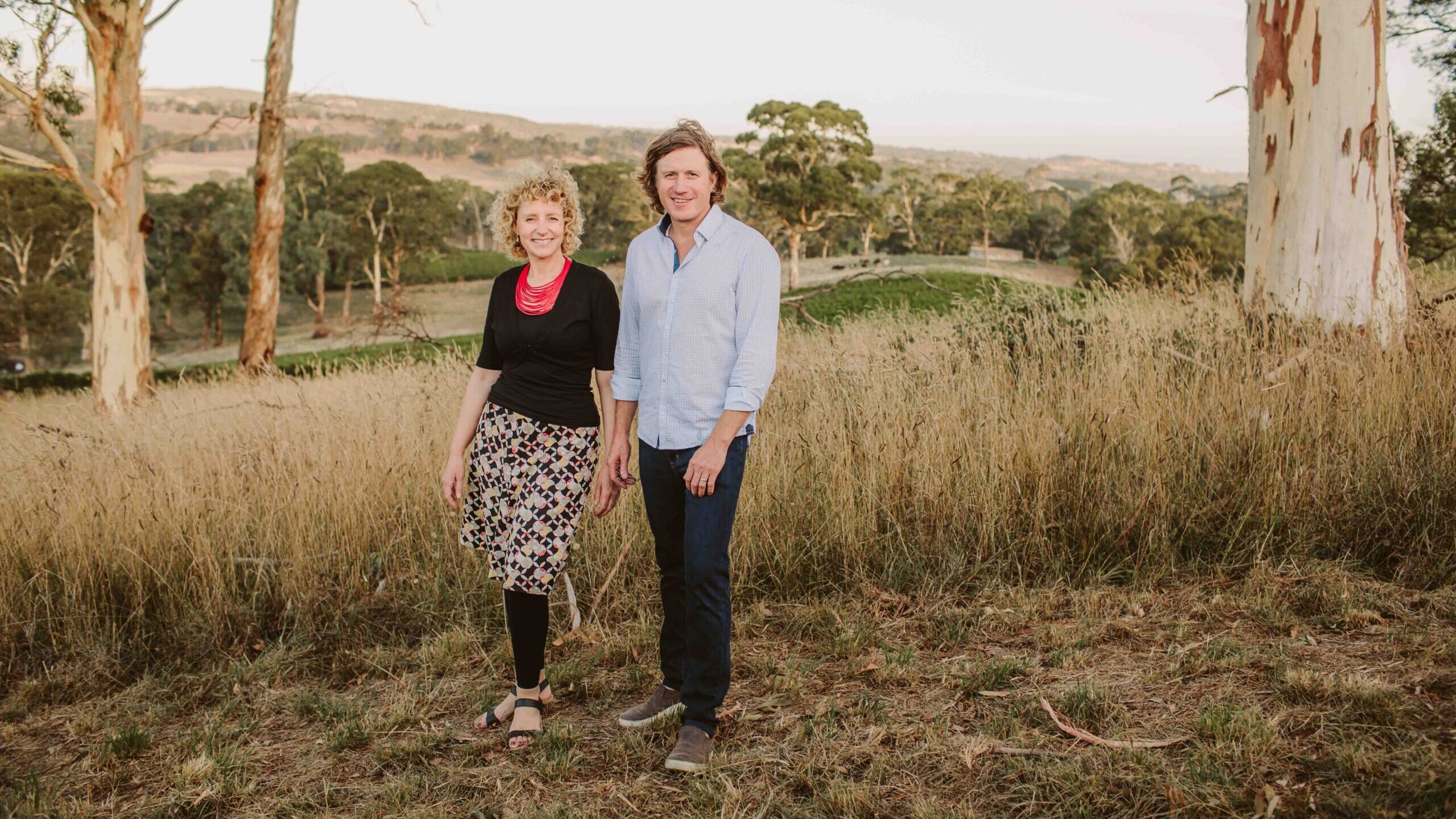If there’s one thing that unites most of us when we’re standing at the shelves of a liquor store, or gazing through a restaurant drinks list, it’s the search for a good bargain.
Inevitably this leads to the bottom line – the price line. Anything below or even close to $20 is in bargain country given the cost pressures all over. How that translates to quality is a personal assessment, though there are pointers out there if you want to drill a little deeper.
Last week the traditional encyclopedia of Australian wine, The Halliday Companion, announced its annual awards shortlist in the usual categories of wine of the year, best winemaker and so on, including a dozen contenders for “Best Value Winery”. Five of them are South Australian, two based in Langhorne Creek, Bleasdale and Bremerton, one based in the Adelaide Hills, Mordrelle Wines, which sources a good deal of its red wine from Langhorne Creek, while McLaren Vale and Barossa Valley bring in the remaining two, Bondar and Two Hands respectively.
If you look back over the past couple of years, Langhorne Creek has featured in every shortlist in the Best Value class, Lake Breeze awarded the ultimate prize in the 2022 edition, while Bleasdale was a finalist the year before that, and also is a finalist in this year’s overall Winery of the Year category. For the record, Bondar was also shortlisted last year.
Clearly, these are clues worth noting if you are in the hunt for a quality bargain.
The immediate response, of course, is to quickly head to those producers and search out those best value opportunities. However, you might be surprised to find that among their offerings are many wines that come in over $20, $30, or even $50 and stretching higher towards $100. Some of those pricier options are tagged with a Halliday Companion Special Value Rosette, and you are forgiven if you question how such pricey products could be considered good value.
In any awards scenario, there has to be some kind of judging framework to inform the decision-making. At the Halliday Companion, that comes down to an algorithm applied to a wine’s price and the points it receives. In the current edition, for instance, if a $11 wine scores 85 or more points, a $21 wine scores 90 or more, a $35 wine gets 95 or more and a $200 wine receives 98 points or more, a Special Value Rosette is applied. In the new edition due out in August, I understand those price points may be adjusted to reflect current economic conditions. The editors of the companion state that “great value can occur at any price point”.
There are further value clues available in the results of the many wine shows. Just last week, the National Wine Show in Canberra announced its trophies for 2023 after judging close to 1000 wines from more than 200 producers – only gold and silver medal winners from eligible Australian wine shows are allowed into this competition, so they are starting from a high baseline.
Among the top prizes, Bleasdale popped up twice, winning the red varietal trophy for its 2021 Second Innings Malbec and also the top gong in the Shiraz Blends division for its 2021 Broad-Side Shiraz/Cabernet/Malbec. Both wines are priced at $22 at cellar door. For the record, two other trophies went to SA producers: best Grenache blend to Stage Door Wines for its Barossa Valley 2021 GSM ($25) and best Grenache to Willunga 100 for its Smart Vineyard Clarendon/McLaren Vale 2021 Grenache ($55).
What we see here are several wines judged by exceptional palates as being at the top of their class, and yet very reasonably priced. Clearly great value. But what about those wines, in the Halliday Companion’s eyes, that head above the $50 mark, and still warrant a Value Rosette? What constitutes value in these cases? The answer to that question is more intangible.
If we concentrate on the region that delivers again and again, at many price points, Langhorne Creek should get its own special value rosette. That might, however, do it a disservice, as the wines so tagged are all excellent wines in their own right and not just good value wines.
So, what is it about Langhorne Creek?
The location, climate and growing conditions are all very beneficial, according to both Bremerton winemaker Rebecca Willson and Lake Breeze winemaker Greg Follett.
“A lot of the vineyards have been here for a long time, there are larger plantings, and climatically it’s really good down here, the soils are good and water is relatively accessible,” Follett says.
“Essentially Langhorne Creek is a grower-based region. For Lake Breeze we’re lucky in that sense as we grow our own fruit – we don’t have to buy in fruit and we’re not impacted by fluctuations in those prices. So we can offer consistent value across what we make.”
That reliability is something that Willson marks as an important factor for consumers assessing the value of Bremerton wines.
“We have a really beautiful grape-growing climate that allows us to have consistency,” she says. “When I look at our wines from one year to the next, as we’re trying to create products of the highest quality, it’s rare for us to have a vintage that throws us quality challenges. So, I think we are a region that is a little blessed when it comes to the weather and low disease pressure and all of those things and consistent climate.”
Apart from reliable fruit, there are other, perhaps unseen elements, of value, especially in higher-priced wines.

Greg Follett at his Lake Breeze winery. Photo: John Krüger
Vineyards that have been tended for many generations – what price do you out on that? Wines that are crafted to mature majestically in the cellar for a decade, perhaps two, extending the initial spend for years to come – how do you assess the value of that long-term investment?
For wines from both these producers that head up into the $80 range, we can take all those esoteric factors into account but in the end, they still have to compare favourably with other top-shelf wines that have attracted similar scores.
“When a value rosette goes on an $80 bottle of wine, I’m hoping that the judges are saying they think that wine is of equal quality with other wines, some much more expensive, and they recognise its qualities just as much as it being really good value at that price,” Willson says.
The commitment by small family producers also has a hidden value when compared to large corporates. Martin Moran, winemaker at Mordrelle Wines based in the Adelaide Hills who crafts highly regarded red wines out of Langhorne Creek, says he receives a lot of feedback from sommeliers and wine bar owners about his artisanal practices.
“They recognise that my wines are not made just as commercial products,” Moran says. “People seem happy to pay a little bit extra for that, which I think is only fair.”
Clearly a lot of work goes into his Adelaide Hills Sparklings, which are all made from high-end Chardonnay fruit in the methode traditionelle style, maturing in bottle for many years, sometimes up to 70 months. They are hand disgorged, sometimes in small batches and, in the end, they are of equal quality to expensive artisan Champagnes, while selling for crazily accessible prices.
The concept of great value is a no-brainer in these cases.
With his Langhorne Creek reds, especially the Malbecs Moran loves to make in celebration of his Argentinian roots, there’s a special source block that has an incalculable role in the character of those wines in particular.
“It’s not only that it’s a vineyard close to Lake Alexandrina with its cooling effects in the afternoon and evening that have a massive effect on the colour and richness of the wine, but it’s just one row only of Malbec that I found there,” he says.
Let me repeat that: just one row.
“It’s genuinely a rarity,” says Moran.
He also keeps a range of museum and Riserva Malbec wines in his portfolio that are very limited in availability and hit higher up the price scale, some above the $100 mark. Meanwhile, his regular “The Gaucho” starts at $38.
Given the hands-on ethos of the Langhorne Creek region’s family winemakers, it’s surprising that there isn’t more kudos given to the district for that alone.
“You know, we’re not as fashionable as a lot of regional regions,” Greg Follett says.
“But on the other hand, Langhorne Creek has a reputation be able to offer good value – it’s a double-edged thing. It’s a matter of fashion more than anything.”
Rebecca Willson agrees: “There’s a sort of regional premium you might pay for similar wines from the Barossa or McLaren Vale, whereas Langhorne Creek flies a bit under the radar, so we can offer quite a bit more.”
TASTING NOTES
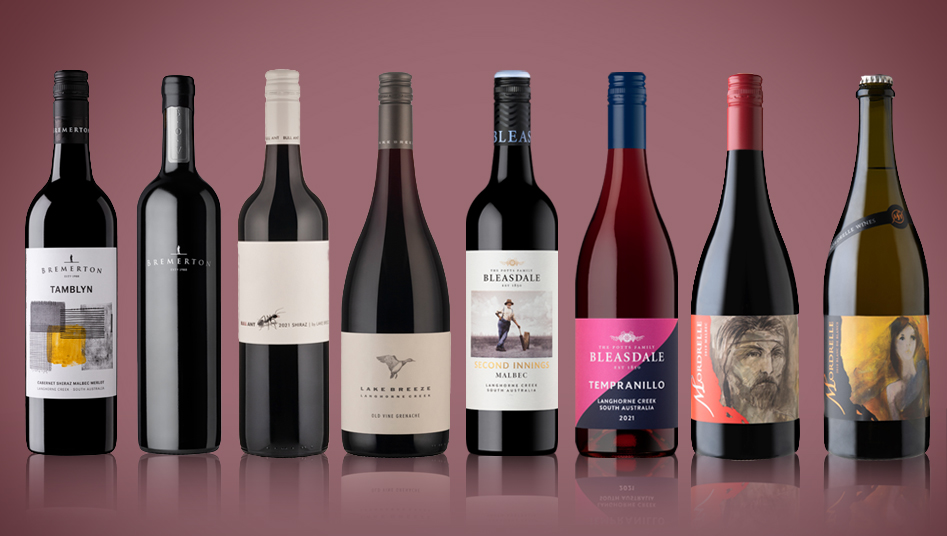
Bremerton Tamblyn 2020
Langhorne Creek / 14.5% / $19
Without doubt, one of the most regular best value red blends from anywhere in the state, this Cabernet Sauvignon (49%), Shiraz (40%), Malbec (6%), Merlot (5%) combination is a regionally pimped variation on the Great Australian Red claret style, attractively lifted with crushed dark fruits, ripe and generous in the palate while still coolly tempered, neatly weighted with fine-grained tannins for a balanced finishing feel. What more could you desire at this price?
Bremerton Best of Vintage 2018
Langhorne Creek / 14.5% / $85
A tiny, best barrel selection of Shiraz and Cabernet Sauvignon from the Bremerton Cellar in this vintage, a cracker by the way. The final blend is a super-powered Great Australian Red style, black as night in the glass, wrapped in rich, spicy oak, the palate picking up speed with bright acidity as if crushed out of fresh picked crimson plums, its natural skinsy grip holding the palate tight in the finish. Impressive already, this is designed to mature for up to 10-20 more years, which will see the wine soften gloriously.
Lake Breeze Bullant Shiraz 2021
Langhorne Creek / 14.4% / $20
From the Follett family estate vineyard on the Langhorne Creek flood plains, this is true price-point value if ever there was. Classic black fruits and dark chocolate – black forest cake in a glass. Heaps of flavour, front to back palate, softly touched in tannin structure, nicely finished. Plenty of wine here, often built with parcels in the winery originally planned for higher echelon versions of Shiraz that didn’t quite fit, thus making the Bullant a better-finished drink.
Lake Breeze Old Vine Grenache 2022
Langhorne Creek / 14.5% / $30
Harvested from 1932 plantings in the Follett family’s lower floodplain estate vineyard. Crafted with traditional winemaking practice and matured in older French oak for just eight months, this releases all the expected fragrance of the grape – an earthy, stonewalled herb garden vibe – with a distinctive sticky tannin mouth feel surrounding its crimson berry sweetness within. Quite a wilful expression of the variety with underlying drive – a regional stamp perhaps worth noting.
Bleasdale Second Innings Malbec 2021
Langhorne Creek / 13.5% / $22
This is not just an insane value-for-money wine, this is a seriously excellent wine that just happens to sell for an insane price. It has just been awarded the trophy for best red varietal wine at the National Wine Show in Canberra, and before that a brace of gold medals in other important shows. It’s a thoroughly contemporary style, fresh, buzzy with violet aromas and bright blueberry fruit, a 20% whole bunch component adding a touch of savoury, braised vegetable notes. Medium-bodied, immensely drinkable.
Bleasdale Tempranillo 2021
Langhorne Creek / 13.5% / $30
Bleasdale might be the pioneer winery in the Langhorne Creek region with an extraordinary history stretching back to the 1850s, but that doesn’t mean it depends solely on the region’s traditional red varieties like Cabernet, Shiraz and Malbec – and it produces those immaculately. This wine proves its winemaking team has a contemporary view as well, with this medium-bodied, savoury styled, new generation varietal, made with minimal sulphites, designed for early drinking. It has typical Tempranillo cherry/choc/cola flavours with a lively palate feel, the wine totally suited to washing down small snacks and fried nibbles like arancini and tapas plates.
Mordrelle The Gaucho Malbec 2021
Langhorne Creek / 13.5% / $38
A single vineyard – just a single row, in fact – goes into this prized Malbec. Winemaker Martin Moran is an Argentinian now based in South Australia, so we can figure he loves this variety and greatly values this fruit. The result is a fabulous treat: extraordinarily dark in colour, undeniable violet and crumbled soil aromas, rich dark purple fruit flavours, and superfine, tapering tannins finishing with a lingering, peppery spice flourish. What’s more to say: great pleasure to be had right here.

Get InReview in your inbox – free each Saturday. Local arts and culture – covered.
Thanks for signing up to the InReview newsletter.
Mordrelle Blanc de Blancs Reserva 2016
Adelaide Hills / 12% / $70
One of a range of fantastic Hills sparklings made by Martin Moran, ranging back to 2010 and a superb 2011 Late Disgorged style. Extended ageing on lees via traditional method sparkling techniques is a house mantra, the 2016 stretching out to an extraordinary 70 months for all the benefits that brings to the final wine. The all-Chardonnay fruit source is from a tiny Mylor vineyard, while the latest iteration, the 2017, now comes from Lenswood. Fanatical micro-production and artisanal passion drive these highly complex wines which have great palate energy, palate-teasing acidity, tangy citrus flavours with nut and yeast bun complexity, even a subtle note of aldehyde. If Grower Champagnes have been your thing, head to these local heroes for amazing value and pleasure.
Support local arts journalism
Your support will help us continue the important work of InReview in publishing free professional journalism that celebrates, interrogates and amplifies arts and culture in South Australia.
Donate Here
